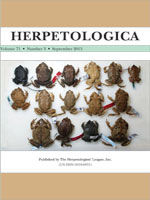The level of species richness of amphibians found in Brazil is the greatest in the world. Despite increasing anthropic pressures on the Brazilian Cerrado and Amazon biomes, several new anuran species are described each year. In this study, two new species of Rhinella found in Brazil are described and assigned to the Rhinella margaritifera species group, based on morphological features. Rhinella sebbeni sp. nov. occurs in forested environments in the Cerrado biome and is characterized by the combination of the following features: snout–vent length (SVL; range = 48.5–59.7 mm in males, and 54.7–66.7 mm in females); presence of bony protrusion at the angle of jaws and rostral keel at the tip of snout; skin on the dorsum with a few granules, but more concentrated on the flanks; parotoid gland is well delineated and small and elliptical in shape showing a lateral line of tubercles. Rhinella gildae sp. nov. is found in southern Amazonia and is characterized by the combination of following features: SVL (range = 69.6–76.4 mm in males); cephalic crests poorly developed; parotoid gland without lateral line of tubercles; in dorsal view, supratympanic crest not exceeding the angle of the jaws; and presence of a vertebral line. We discuss data on morphological variation, natural history attributes, and distribution of the two new species.
How to translate text using browser tools
1 September 2015
Revealing Two New Species of the Rhinella margaritifera Species Group (Anura, Bufonidae): An Enigmatic Taxonomic Group of Neotropical Toads
Wilian Vaz-Silva,
Natan M. Maciel,
Rogério P. Bastos,
José P. Pombal
ACCESS THE FULL ARTICLE

Herpetologica
Vol. 71 • No. 3
September 2015
Vol. 71 • No. 3
September 2015
AMAZON
biodiversity
Cerrado
dry forest
natural history
rain forest




